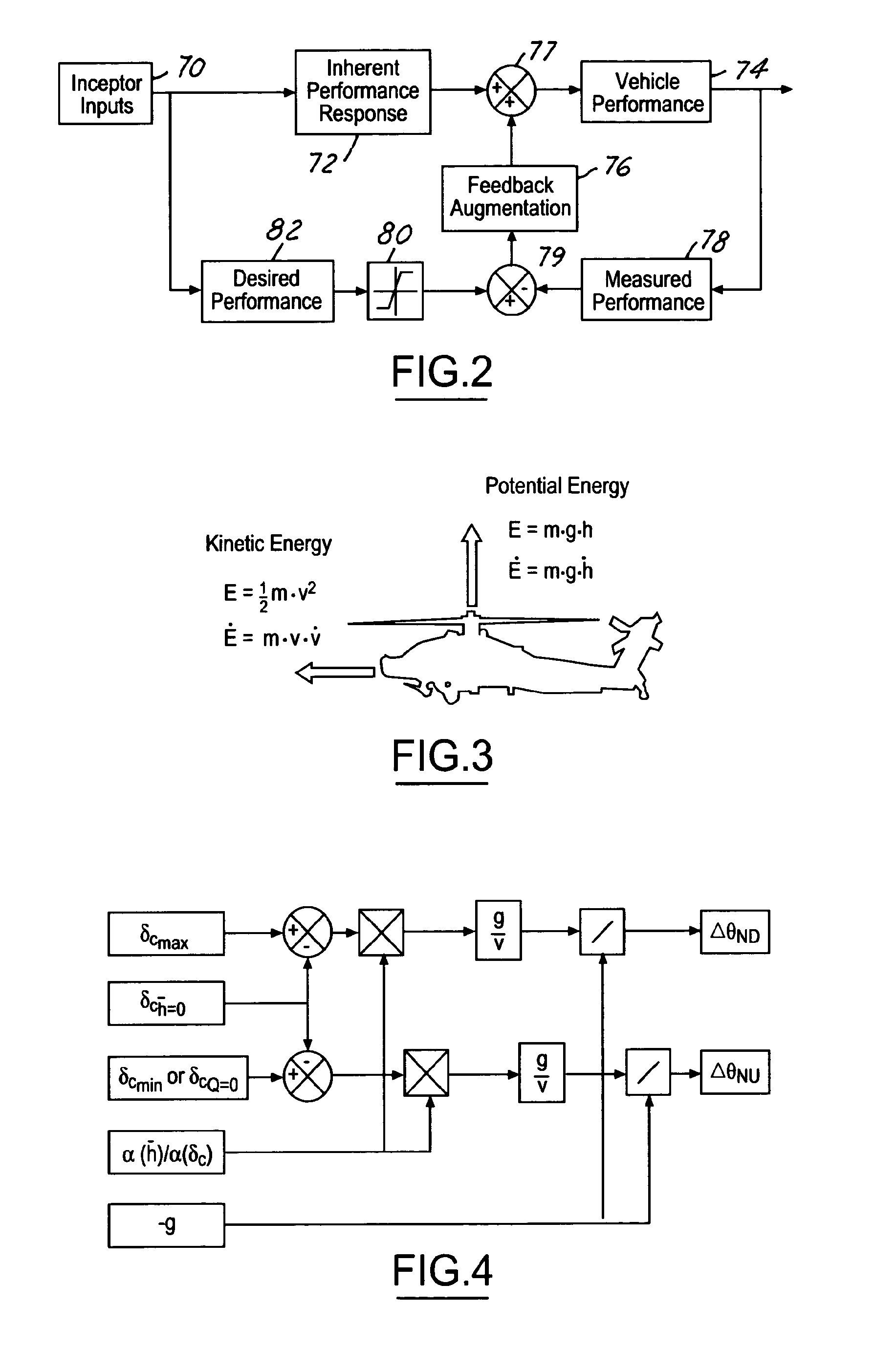Constant vertical state maintaining cueing system
a cueing system and constant vertical state technology, applied in process and machine control, instruments, navigation instruments, etc., can solve the problems of limiting the ability to maintain the desired vertical state, the inceptor positions required to maintain the vertical state exceed one or more of the vertical axis limits, and the inability to maintain the vertical state or the limit,
- Summary
- Abstract
- Description
- Claims
- Application Information
AI Technical Summary
Benefits of technology
Problems solved by technology
Method used
Image
Examples
Embodiment Construction
[0039]While the present invention is described with respect to a method and system for cueing a helicopter vehicle operator as to maximum allowable accelerations and decelerations that may be performed during a constant vertical state without disengagement therefrom, the present invention may be adapted for any type of aeronautical vehicle or system.
[0040]In the following description, various operating parameters and components are described for one constructed embodiment. These specific parameters and components are included as examples and are not meant to be limiting.
[0041]Referring now to FIG. 1, a perspective and block diagrammatic view of a constant vertical state maintaining system 10 for helicopter-type aeronautical vehicle 12 in accordance with an embodiment of the present invention is shown. The cueing system 10 includes control inceptors 18 and 22 which are coupled to the flight controller 38 of the aeronautical vehicle. In the embodiment shown, the system 10 includes a v...
PUM
 Login to View More
Login to View More Abstract
Description
Claims
Application Information
 Login to View More
Login to View More - R&D
- Intellectual Property
- Life Sciences
- Materials
- Tech Scout
- Unparalleled Data Quality
- Higher Quality Content
- 60% Fewer Hallucinations
Browse by: Latest US Patents, China's latest patents, Technical Efficacy Thesaurus, Application Domain, Technology Topic, Popular Technical Reports.
© 2025 PatSnap. All rights reserved.Legal|Privacy policy|Modern Slavery Act Transparency Statement|Sitemap|About US| Contact US: help@patsnap.com



